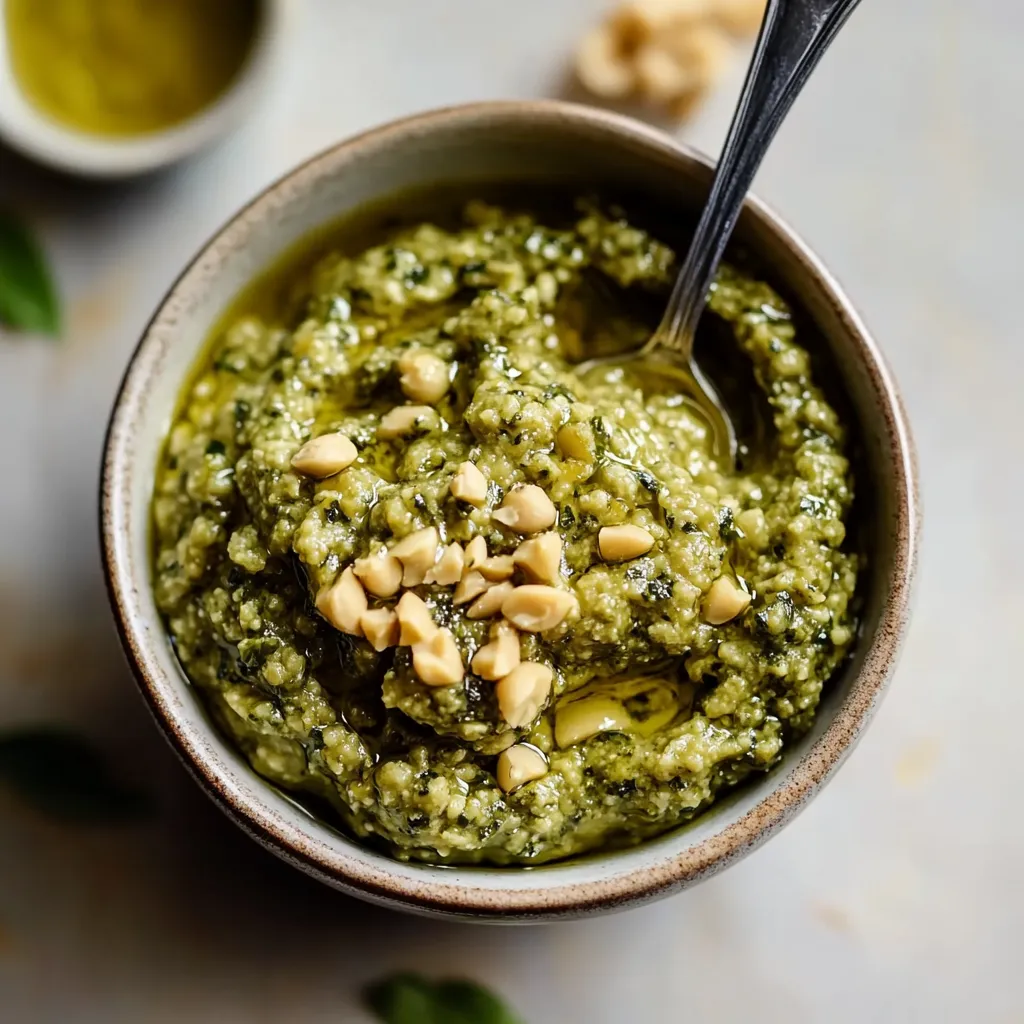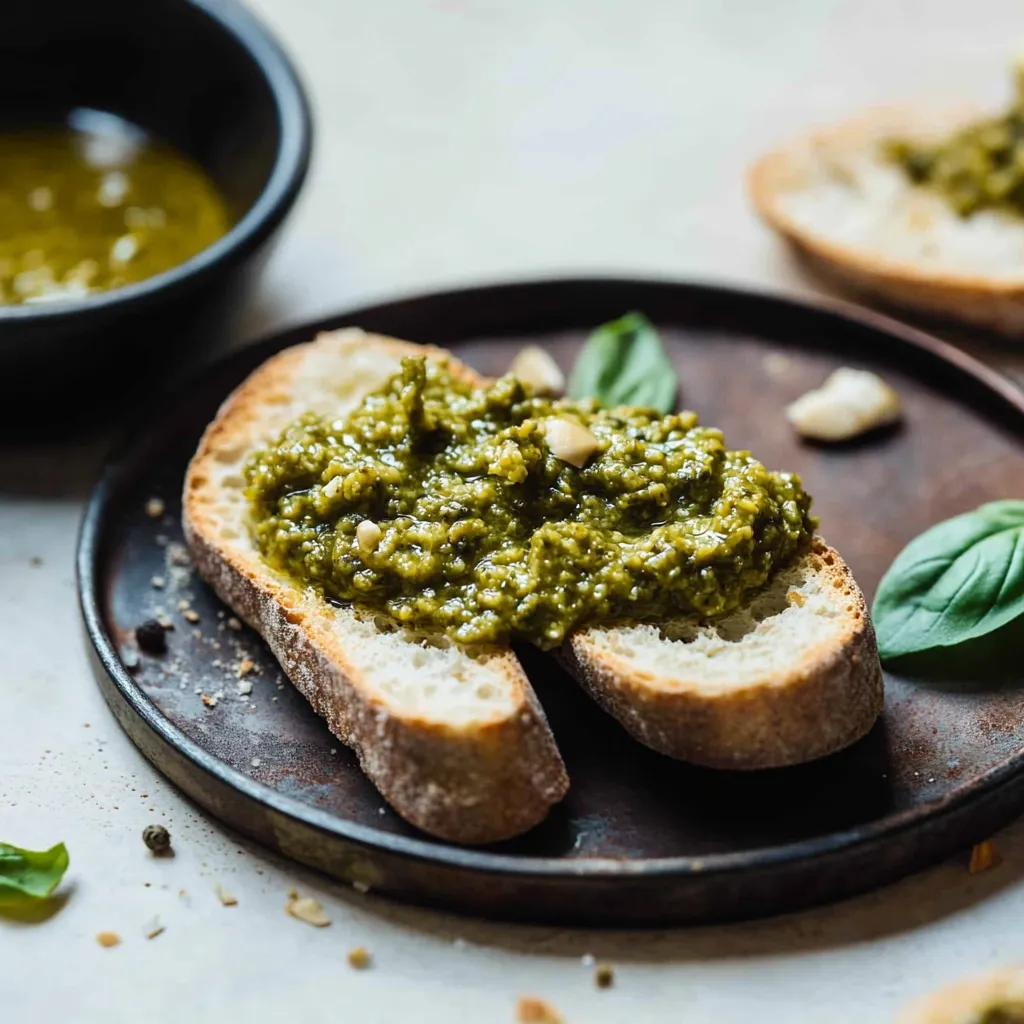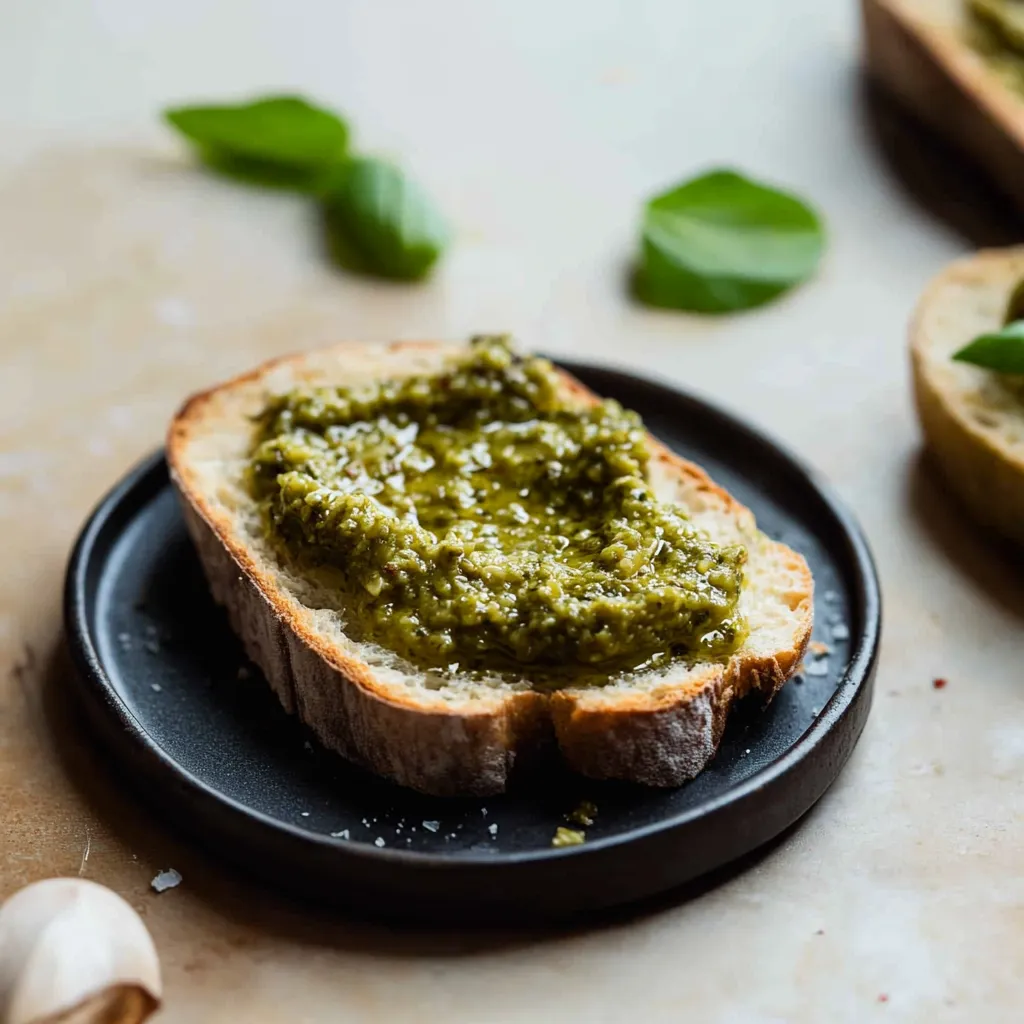 Pin it
Pin it
This vibrant green olive tapenade transforms ordinary appetizers into sophisticated delights with minimal effort. It's my go-to spread for entertaining because it delivers incredible Mediterranean flavor while looking effortlessly elegant on any table.
I discovered this tapenade recipe while vacationing along the Mediterranean coast. The local markets would sell versions that put standard grocery options to shame. After experimenting for years, this version has become my signature appetizer when hosting friends.
Ingredients
- Green olives: I prefer buttery Castelvetrano for their mild sweetness and beautiful green color
- Anchovy fillets: They deliver umami depth without fishiness; look for oil packed varieties
- Pine nuts: Their delicate richness adds luxurious texture and nutty complexity
- Fresh herbs: Basil and parsley provide brightness and color that bottled versions lack
- Capers: These little flavor bombs contribute necessary briny notes; use salt packed if available
- Garlic: Just one clove perfectly complements without overpowering
- Lemon zest: Adds essential brightness that balances the richness
- Extra virgin olive oil: Splurge on quality oil here; it truly makes a difference
Step-by-Step Instructions
- Prepare the base:
- Add olives, anchovies, pine nuts, fresh herbs, capers, garlic, and lemon zest to your food processor. Pulse carefully until you reach a coarse texture. The key is maintaining some texture rather than blending into a smooth paste immediately. About 8 to 10 pulses should be perfect.
- Incorporate the olive oil:
- Stream in the olive oil while pulsing a few more times. This creates an emulsion that gives the tapenade its perfect consistency. The mixture should be spreadable but still have visible texture from the olives and herbs. Process until you achieve your preferred texture; some prefer it chunkier while others like it smoother.
- Season and taste:
- This critical step ensures your tapenade is perfectly balanced. Add kosher salt gradually, tasting between additions. Remember that olives, capers and anchovies all contribute saltiness already. The goal is to enhance flavors without making it overly salty. A small splash of lemon juice can brighten the flavor if needed.
- Presentation:
- Transfer to a beautiful serving bowl and let sit for 15 minutes before serving to allow flavors to meld. Drizzle with a final touch of your best olive oil, scatter a few extra pine nuts and small basil leaves for visual appeal. The tapenade should glisten invitingly with a rich emerald color studded with herbs.
 Pin it
Pin it
The anchovies are truly the secret ingredient here. Many people initially balk at including them, but they dissolve completely into the mixture and provide that elusive depth that makes people ask for the recipe. My vegetarian friends enjoy this tapenade just as much when I substitute a teaspoon of white miso paste for the anchovy fillets.
Make Ahead Magic
This tapenade actually improves with time, making it perfect for entertaining. Prepare it up to three days ahead and store in an airtight container in the refrigerator. The olive oil will naturally solidify when cold, so always remove it from the refrigerator at least 30 minutes before serving. Give it a quick stir to reincorporate any separated olive oil. The flavors meld beautifully during this rest time, creating an even more complex taste profile.
Beyond Bread
While serving tapenade with crusty bread is classic, this versatile spread works brilliantly in many applications. Spoon it over grilled fish for an instant sauce, whisk a spoonful into vinaigrette for extraordinary salads, or use as a flavor bomb in pasta dishes. My personal favorite is spreading it onto grilled vegetables while still hot from the grill, allowing the heat to release all those amazing aromas. It transforms ordinary roasted potatoes into something restaurant worthy with zero additional effort.
Mediterranean Roots
Tapenade originates from Provence in southern France, where olive trees have grown for centuries. Traditionally made with black olives and capers, the name comes from the Provençal word for capers, "tapenas". This green version is my modern interpretation that maintains the spirit of the original while offering a brighter flavor profile. Local Mediterranean variations might include different herbs like oregano or thyme, but the essence remains the same: a celebration of the olive in all its glory.
 Pin it
Pin it
Serve this tapenade as a centerpiece for your next gathering, and enjoy the rave reviews to follow!
Frequently Asked Questions
- → What are the best olives to use for green tapenade?
Castelvetrano, Cerignola, or Manzanilla olives work best because they offer a buttery texture and mildly fruity flavor that balances the brininess. Castelvetrano olives are particularly good for their bright green color and meaty texture.
- → Can I make this tapenade without anchovies?
Yes, you can omit the anchovies for a vegetarian version. Consider adding a bit more salt and perhaps a splash of olive brine or a teaspoon of miso paste to compensate for the umami flavor the anchovies provide.
- → How long does homemade olive tapenade last?
When stored in an airtight container in the refrigerator, this tapenade will last up to 1 week. The olive oil may solidify slightly when cold, so allow it to sit at room temperature for about 30 minutes before serving.
- → What can I serve with green olive tapenade?
Serve tapenade with crusty bread, crackers, crudités, or as part of a Mediterranean mezze platter. It also works beautifully as a spread on sandwiches, a topping for grilled fish or chicken, or stirred into pasta for a quick sauce.
- → Can I freeze tapenade?
Yes, tapenade freezes well for up to 3 months. Freeze in small portions in airtight containers or ice cube trays, then transfer to freezer bags. Thaw overnight in the refrigerator and stir well before using.
- → What alternatives to pine nuts can I use?
You can substitute walnuts, almonds, or pistachios for the pine nuts. Each will contribute a different flavor profile, with pistachios complementing the green color particularly well. Toast them lightly first for the best flavor.
